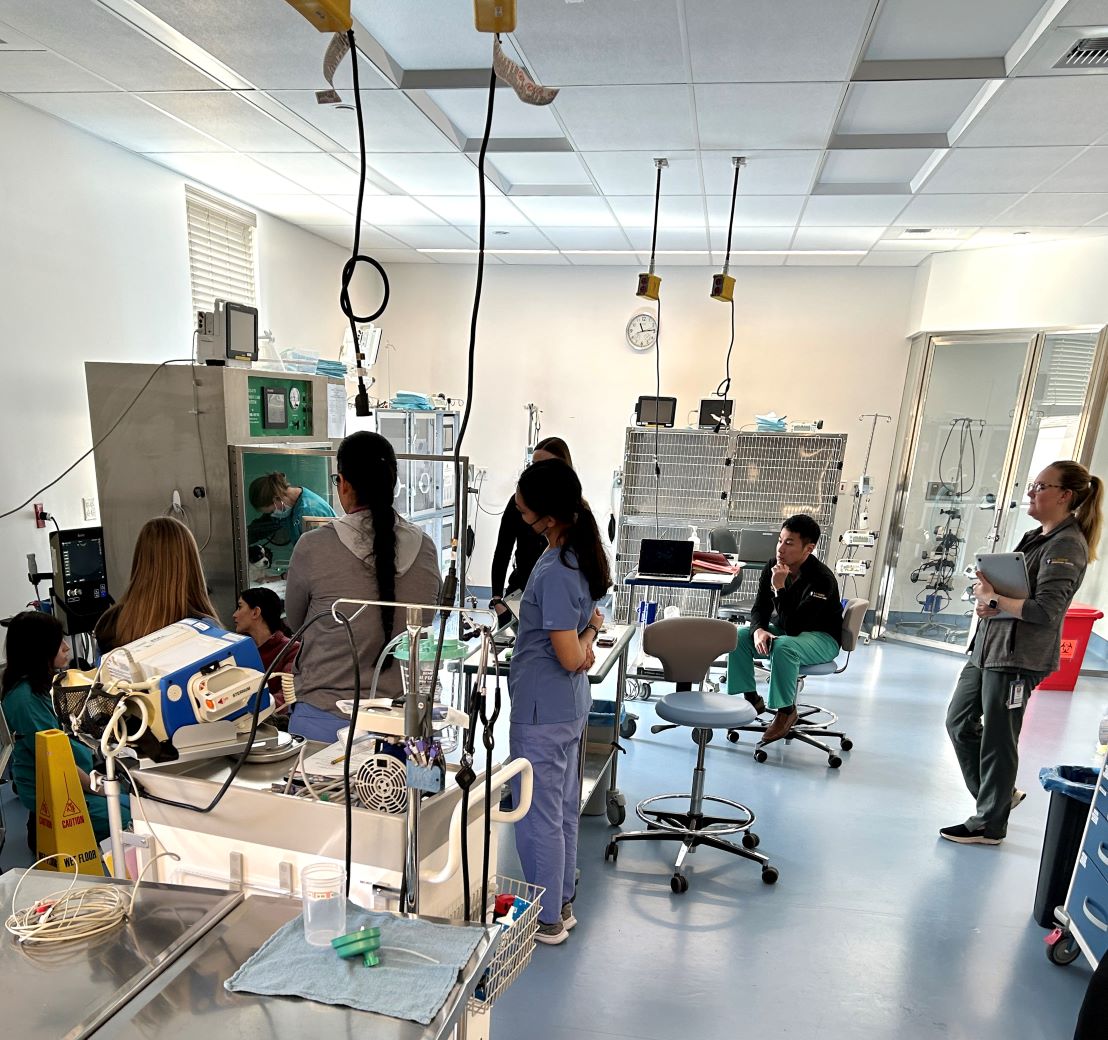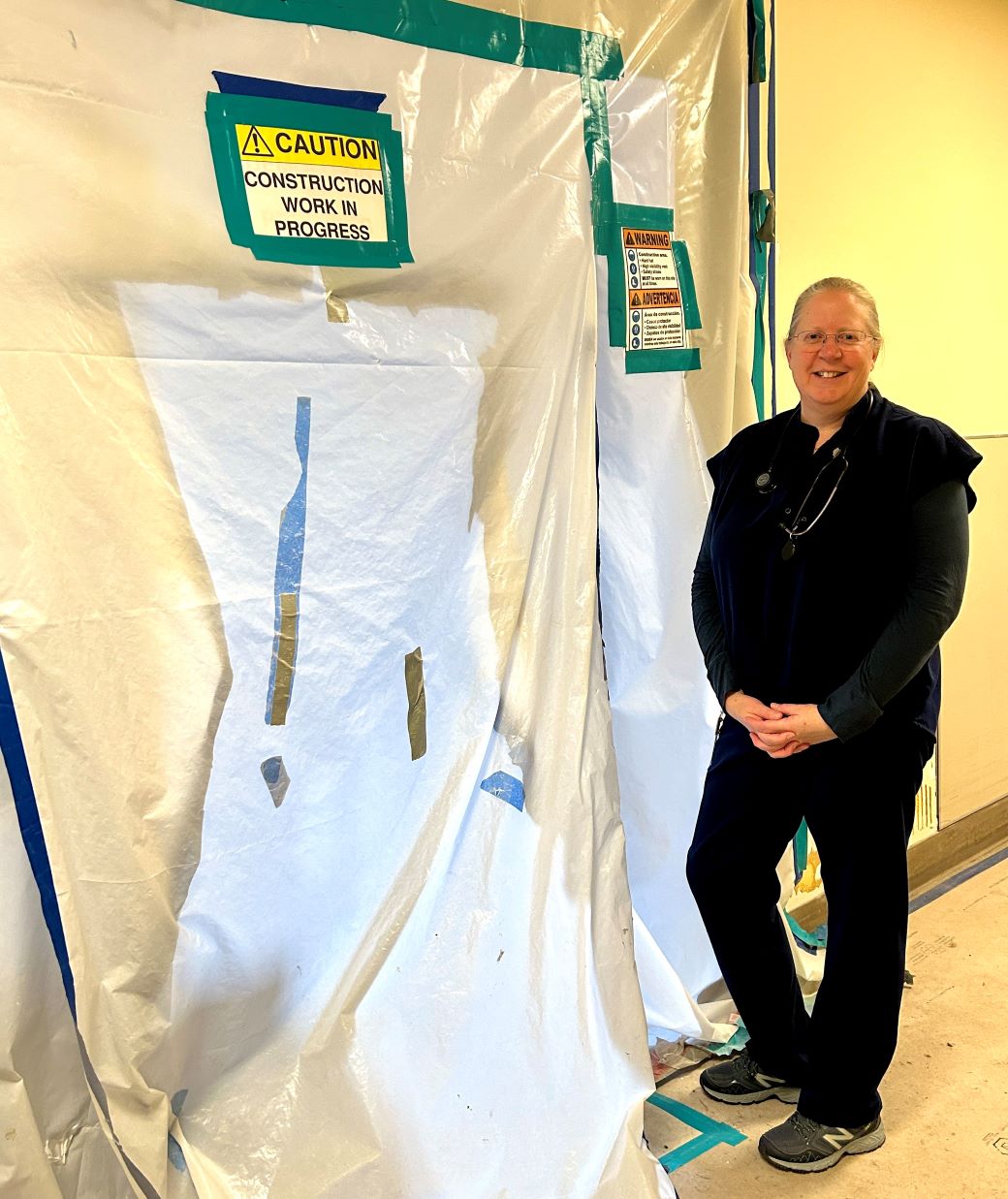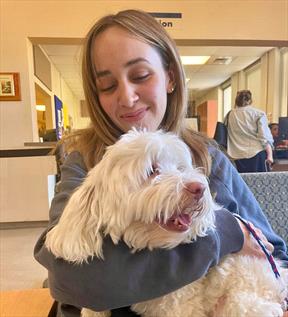 Listen to this story.
Listen to this story.
ICU

Photo by Dorsey Griffith
As one veterinarian demonstrates ultrasound to students, another attends to a patient in the bigger, remodeled intensive care unit at the University of California, Davis, Veterinary Medical Teaching Hospital.
A spacious new emergency room and intensive care unit, along with more money for research and scholarships, stand among clear markers that the University of California, Davis, School of Veterinary Medicine has nearly completed a $500 million fundraising drive. And it's not done.
The school is planning to seek $220 million more from donors to improve existing spaces and to build more new facilities at its 54-year-old teaching hospital.
The investment comes as UC Davis and other schools maintain that the veterinary profession is suffering from an acute labor shortage that could be alleviated by expanding teaching capacity.
The latest investment in the veterinary school accounts for about a quarter of a $2 billion fundraising campaign officially launched by the university in October 2020 that it described as the biggest philanthropic endeavor in its history.
A centerpiece of the capital project underway is a new emergency room and intensive care unit built within the hospital's existing footprint and completed last spring. The updated ER and ICU have nearly double the working space of the original units, which had been the same size since the building opened in 1970. Back then, the entire hospital was designed to accommodate an annual caseload of 3,000. In 2023, the hospital tallied 53,363 patient visits.
While the upgrade has dramatically improved capacity, the hospital overall remains limited in the number of patients it can see and students it can train. A shortage of veterinarians and registered veterinary technicians, as well as remaining space constraints, are to blame, said Dr. Kate Hopper, who oversees small animal emergency and critical care.
"The capacity is limited by the number of clinicians we have on the floor," said Hopper, interim chief veterinary medical officer and associate dean for operations. "We'd love to expand our teaching programs, but without more space, we can't do that."
Toward that end, the veterinary school is revising its master plan, last updated in 2015, said Tom Hinds, the school's director of strategic planning and communications. He said the revision is "taking into consideration the needs of the school, the needs of the profession, and the medical and technological advances over the last nine years."
Hinds added, "One critical point is to accommodate society's pressing need for more veterinary professionals by integrating the ability to educate and train more veterinarians and specialists into the new master plan."
Dr. Kate Hopper

Photo by Dorsey Griffith
Dr. Kate Hopper, interim chief veterinary medical officer, stands at the entrance of the almost-completed dental and oral surgery center.
Under the previous plan, the school was to embark on a three-phase, $508 million capital program that would nearly double the size of the teaching hospital. That plan generated a mix of excitement and dismay in the veterinary community, with some critical of the price tag.
The program was supplanted midstream by the $500 million campaign, which is raising money for not just facilities and equipment but research, hospital services, student support, endowed lectureships and charitable veterinary care.
About two-thirds of the $500 million — a target anticipated to be met in June — is going to noncapital purposes. For example, support for students, including scholarships, gets a $67 million share.
Some projects in the earlier capital plan have since been accomplished, and some have been delayed. Three projects that were postponed until the next round of improvements are an enlarged small animal hospital, an Equine Performance Center and a Livestock and Field Services Center.
To fund that next round, Assistant Dean of Advancement Lee Ann Jansen said that besides seeking another $220 million from donors, hospital revenues and hoped-for state contributions will be tapped, as well.
Still cramped
Meanwhile, a continued space crunch limits what the hospital can do, according to Hopper. "We are proud of the number of animals we see, but it's heartbreaking not to be able to see everyone who wants to come," she said. "Being able to train more veterinary professionals to meet the need and provide as much clinical care to meet the demand would be our ultimate dream. We need additional facilities to do that."
While the demand for veterinary services that surged during the Covid-19 pandemic has eased, it remains high and is anticipated to continue growing, Hopper said.
"Nationally, there has been some decrease in the demand in the last year, but it is still higher than pre-Covid, and owners are still faced with long wait times to get appointments, in many instances," she said. "For the future, we expect the demand for our clinical services will maintain, if not grow, given that we provide many unique treatments and interventions."
Even the most basic clinical programs face space and staffing challenges. For example, she said, the small animal hospital needs more exam rooms so it can see more patients. The hospital has 14 exam rooms for dogs and cats in its main building and 12 in other buildings. Hopper estimates the hospital needs 15 to 20 more rooms. Waits for appointments are one to two months for every specialty, including oncology, dentistry and internal medicine.
Other U.S. veterinary school upgrades
As for staffing, Hopper pointed to an oft-cited August 2023 assessment from Mars Veterinary Health that attributes a nationwide veterinary workforce crunch in part to retirements of baby boomers and shortages of veterinary technicians.
As of early April, the UC Davis veterinary school was seeking to fill five faculty positions, 15 veterinary technician slots and 11 nonveterinary staff and managerial positions. That compares with a single professor and one specialist position posted on the veterinary school website at one point in 2013; and six professor positions, one postdoctoral scholar and one specialist job posted at one point in 2015.
The personnel shortage directly impacts patient care, Hopper said. "A lot of time is spent trying to determine if we can meet the needs or whether we have to send [patients] to another specialty facility."
The current fundraising campaign is paying for $105 million in buildings, equipment and property. Completed projects include the ER and ICU ($2 million), a large animal support facility ($4 million), a feline treatment and housing area ($940,000) and expanded cardiology facilities ($400,000).
Scheduled to open this month are a renovated and expanded dental and oral surgery center ($2.5 million) and a Center for Advanced Veterinary Surgery ($9.4 million). An all-species imaging center ($23.3 million) is under construction.
The university also has purchased a 23,000-square-foot building in San Diego ($16 million) to expand its veterinary services in Southern California, currently offered in two locations focusing on cardiology and nephrology, including hemodialysis. Those operations will be folded into the new center, which will add services in oncology, emergency medicine and critical care, soft tissue surgery and internal medicine. The new center is planned to open in fall 2025.
ER and ICU updates make spaces more welcoming
Hopper has been a member of the school community since 1999, when she arrived from Australia to continue her specialty training in emergency medicine and critical care. She said the teaching hospital always provided excellent care, but the old ICU and ER were cramped, noisy and difficult for everyone.
The situation was especially acute during the pandemic, when ER demand swelled as many people acquired pets and some veterinary practices closed. "We were all working on top of each other; there was not a lot of room for us or the animals," she said.
The expanded space, she said, "allows our technicians to be able to focus on patients in a quiet, stress-free environment and to take on more patients if need be. It's a lovely setup. It's night and day."
Tending a pup just out of surgery

Photo by Dorsey Griffith
Katie Shippen, a veterinary technician, tends to a patient in the ICU following surgery. Recovering large dogs are commonly bedded on the ground. The non-slip floor is designed for use in medical facilities.
Now that caseloads have plateaued — numbering 12,000 last year — the revamped ER and ICU are not necessarily seeing more patients, Hopper said, but "we see them in a more efficient and friendly manner," and the remodel better accommodates teaching staff, care providers and clients.
From a visitor's perspective, the ICU today feels roomy. On a recent day, several students comfortably stood or sat watching a faculty member demonstrate ultrasound on a dog, while a veterinary technician attended to a large postoperative dog lying on a pad on the bright blue nonslip floor specially designed for medical facilities. Nearby, a veterinarian monitored a dog housed in a Plas-Labs self-contained life-support unit, and another dog rested in one of several large cages elevated off the floor.
Next door is the new emergency room, outfitted with four treatment tables that can be wheeled into different positions. One table has access to a sink, a handy addition to help cool animals admitted for heat stroke. The room includes dedicated workspace for clinicians, enabling them to access records, teach and care for patients in the same space.
Steps away from the ER and ICU is a new diagnostic laboratory that can provide point-of-care blood work and refrigeration for medications. A conference room that doubles as a place for staff, faculty and students to grab a snack is designed to improve working conditions during long shifts.
Although the hospital's overall square footage is unchanged, the remodel repurposed some areas, including a former staff changing room and part of a ward that housed dogs, to give the ER and ICU more room.
The expansion was completed just as Lexy Cartwright was on a desperate hunt for specialty care for her 7-year-old Maltipoo, Sammy. One day, about seven months ago, Sammy suddenly couldn't walk. His primary care veterinarian referred him for a neurological assessment that eventually led to a diagnosis of intervertebral disk disease.
Cartwright, who lives in Gilroy, about 130 miles from the hospital, said she contacted more than 30 veterinary practices in search of a neurologist. The best answer she got was an offer of an appointment in four months.
Lexy & Sammy

Photo by Keeton Janisch
Lexy Cartwright traveled 130 miles to take her dog, Sammy, to the UC Davis Veterinary Medical Teaching Hospital for neurological specialty care after being unable to obtain a timely appointment at any of 30 other practices she called. Sammy had surgery for intervertebral disk disease and has since recovered.
"I felt completely helpless," she remembered. "Despite how hard I tried to advocate for him, I felt like I wasn't succeeding. It was not until I came to the UC Davis emergency vet hospital that I felt like things would be OK again."
There, surgery put Sammy back on his feet, Cartwright reported. "[T]hey healed him to where he can now live a normal life again."
The remodel also has enabled the hospital to fit more aspiring and advanced veterinarians onsite. Hopper said that up to 100 veterinary students in their final year of study and as many as 60 veterinarians training to be specialists are on clinical duty in the small animal hospital at any one time.
One is fourth-year student Nika Marie Padidar, who will work in emergency medicine after graduating in May. Comparing the ICU and ER before and after construction, she said, "It seems like people are happier now. Before, it felt cramped and more difficult to learn in that environment. It was distracting. There was so much clutter and lack of space. The patients seem happier now, too."
The new spaces stand in contrast to the yet-to-be-renovated parts, such as the general ward where people and equipment are crowded into a maze-like environment.
Students and doctors training to be specialists recently spilled out of an office doorway as they leaned over one another, listening to a professor using a computer to describe a procedure.
Thinking about what could be, Hopper said: "Veterinary medicine is becoming more sophisticated, and we are also collaborating more with human medicine. At some point, space constraints become a barrier to innovation."
Edie Lau contributed to this report.